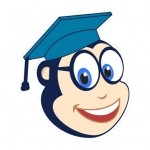An Interview is not the stair to getting a bank job. It is all about your personality, knowledge, pressure handling capability and team interaction. If you can make quick decisions in any situation, then your chances get less of being rejected in a Bank Interview.
But a little knowledge is a dangerous thing. When a person gets some knowledge in a particular field, they react as an expert in that field. So, if you are preparing for Bank Interview and want to avoid rejection, you must know everything that can be asked in the Interview about Banks.
We have already given you a road map of the Bank Interview in Part 1. And provided the Basic information on Bank Functions, Accounts in Part 2. Recently we have shared the complete information of the Reserve Bank of India in part 3. Now, it’s time to focus on the Bank Financial System. How does it work?
In this article, we have discussed the following points: -
SEBI - Securities and Exchange Board of India
PFRDA - Pension Fund Regulatory and Development Authority
FMC - Forward Markets Commission
IRDA - Insurance Regulatory and Development Authority
Financial Ratio Analysis with Explanation
Various Payment Systems in Banks in India
Financial Sector Regulator in India
India has five financial sector regulators that maintain the market's financial securities. We have provided a brief description of these financial sector regulators below: -
RBI - Reserve Banks of India
As you know, RBI (Reserve Bank of India) plays a big role in managing India’s economy and financial stability. It was established on 1st April 1935 as the central bank of India. All the bank (Private & Government) works under the Reserve Bank of India. It has mainly 6 functions: -
Evolution of Central Banking
Price Stability
Financial Stability
Currency and Banking Functions
Foreign Exchange
Developmental Functions
Since its establishment, the Reserve Bank has been headed by 25 governors. The term of RBI Governor is three years.
Present Governor of RBI – Shaktikanta Das
Headquarter – Mumbai
SEBI - Securities and Exchange Board of India
The SEBI was established on 12th April 1992 with an act of provisions of the Securities and Exchange Board of India, 1992. The main preamble of SEBI is “To protect the interests of investors in securities and promote the development of, and regulate the securities market and for matters connected therewith or incidental thereto”.
Securities and Exchange Board of India has some important power regarding the stoke exchanges: -
To Stock Exchanges & Intermediaries
To Impose Monetary Penalties
To Initiate Actions in Functions Assigned
To Regulate Insider Trading
Under the Securities Contracts Act
To Regulate Business of Stock Exchanges
Present Chairman of SEBI - Ms. Madhabi Puri Buch
Head Office - Mumbai, Maharashtra
Download Free IBPS Study Kit & Start Preparing Now
PFRDA - Pension Fund Regulatory and Development Authority
The PFRDA was established on 23rd August 2003 by the Government of India. The Preamble of PFRDA is “To promote old age income security by establishing, developing and regulating pension funds and protect the interests of subscribers to schemes of pension funds and related matters”. The Pension Fund Regulatory and Development Authority has one chairperson with three whole-time members.
Present Chairman of PFRDA - Supratim Bandyopadh
Head Office - New Delhi
FMC - Forward Markets Commission
FMC is also a financial sector regulator of India which was established in 1953 under the provisions of the Forward Contracts (Regulation) Act, 1952. But on 28th September 2015, the FMC was merged with the SEBI.
IRDA - Insurance Regulatory and Development Authority
It was established in 1999 by the IRDA act of parliament 1999. The main mission of the Insurance Regulatory and Development Authority is “To protect the interests of the policyholders, to regulate, promote and ensure orderly growth of the insurance industry and for matters connected therewith or incidental thereto
The Authority of IRDA has ten members team with one chairman five whole-time members and four part-time members included.
Present Chairman of IRDA - Debasish Panda
Head Office – Hyderabad
Know More: - Indian Banking and Financial System
Financial Ratio Analysis with Explanation
A financial ratio is a ratio of calculation and comparison that includes the information of financial statements for any organization. This section is mostly asked in general awareness and Interview rounds. In the banking sector, it is divided into four categories: -
Liquidity Ratios
As we mentioned in the Banking Interview Guide Part 1, liquidity is an ability that works under a short-term obligation (financial system and solvency). And the Liquidity ratio indicates the current ratio, acid test ratio (Quick Ratio), working capital ratio and cash ratio.
| Liquidity Ratios |
Formula |
Description |
| Current Ratio |
Current Asset/Current Liabilities |
A current asset is an asset or cash that will convert to cash within twelve months. A current liability is an amount which will be paid to loan takers and any other creditors within one year. |
| Quick Ratio |
Quick Asset/Current Liabilities |
As per the name, the quick asset is an asset that will convert to cash quickly. |
| Working Capital |
Current Assets - Current Liabilities |
- |
| Working Capital Ratio |
Current Assets/Current Liabilities |
- |
| Cash Ratio |
Cash + Current Investment/Current Liabilities |
- |
Profitability Ratios
One of the most important questions generally asked in a banking interview is how to calculate profit and its ratio?
The profitability ratio is divided into 5 categories: -
| Profitability Ratios |
Formula |
Description |
| Gross Profit Ratio |
(Gross Profit/Net Sales) x 100 |
Gross profit is a profit which will make after deducting the product cost and other investment.Net sales are the total sales a company made. |
| Net Profit Ratio |
(Net income/Net Sales) x 100 |
Income that comes from saving the account, FD, Investment, etc. is called Net Income. |
| Return on Asset |
Net income/Average Assets |
- |
| Return on Investment |
Net income/Long Term Capital |
Long-Term Capital means long-term liabilities. |
| Return on Equity |
Net income/Equity |
Equity is the value of the company’s shareholder’s fund. |
Turnover/ Operational Ratios
You can calculate the turnover ratios in 6 basic ratios: -
| Turnover/ Operational Ratios Name |
Formula |
Description |
| Cash Turnover Ratio |
Net Sales/Cash |
- |
| Fixed Assets Turnover Ratio |
Net sales/ Net fixed assets |
- |
| Assets Turnover Ratio |
Net Sales/Average Total Assets |
- |
| Receivables Turnover Ratio |
Net Sales/Average Receivables |
Average Receivables include debtors/bills receivables etc |
| Payables Turnover Ratio |
Net Purchases/Average Payables |
Average payables are the accounts payables or the firm’s current liabilities to creditors |
| Inventory Turnover Ratio |
Cost of the Goods Sold/Average Inventory |
Average Inventory is the Stock-in-Trade |
Get Free Counselling from IBPS Experts
Leverage Ratios
It includes 4 basic leverage ratios: -
| Leverage Ratios |
Formula |
Description |
| Total Assets to Debt Ratio |
Total Liabilities/Total Assets |
- |
| Debt to Equity Ratio |
Total Liabilities/Equity |
- |
| Interest Coverage Ratio |
EBIT/Interest Obligations |
EBIT - Earnings before Interest and Taxes. |
| Long-Term Debt to Net Working Capital Ratio |
Total long-term debt/Net WC |
Net WC (Net Working Capital) = Current Assets - Current Liabilities |
Various Payment Systems in Banks in India
As you know, India is one of the fastest-growing countries in the banking sector also. There are 130 million cards (Debit Card and Credit Card) issued by the banks. Today, most people use credit card/ debit cards to pay shopping bills, electric bills, immediate cash, etc.
Payment and settlement system is used for these financial transactions online. In India, Banks provide you various types of facilities for payment which are completely secure such as: -
Real-time gross settlement (RTGS)
National Electronic Funds Transfer (NEFT)
Nepal Remittance Facility Scheme (NRFS)
Immediate Payment Service (IMPS)
Bharat Bill Payment System (BBPS)
Money Transfer Service Scheme (MTSS)
Aadhar Enabled Payment System (AEPS)
Unified Payments Interface (UPI)
Now, at the end of this blog, you are aware of the financial system, ratios, and payment system of banks of India. Questions from these units are generally asked in the Bank interviews. Want to avoid rejection in a banking interview? Then you must know all the details described in our previous parts.
You must check our next blogs, where we have discussed mutual funds and priority sectors bank.
If you have any doubt about this article, you can ask our experts through the comment box. We will reach out to you soon.
Thank You!!
Click Here to Read Part 3 Click Here to Read Part 5

















